GPS tracking has transformed fleet management, enabling businesses to streamline operations, boost productivity, and, ultimately, increase profitability. In this article, we will discuss fleet tracking solutions, their benefits, functionality, choosing the right one, and the integration of GPS and electronic logging devices (ELD) for compliance purposes. Additionally, we’ll go over the advantages of HOS247’s solutions and our commitment to efficient customer support.
Do you have any questions? Talk to ELD Advisor: 650-405-3372 or Request Callback
Benefiting from Tracking Solutions
Fleet tracking, powered by advanced GPS technology, is a valuable tool for efficient fleet management. The best fleet tracking solutions provide real-time visibility into vehicle locations and statuses and offer a wide range of features and functionalities designed to streamline operations and maximize asset utilization to increase efficiency. Adopting GPS tracking brings numerous advantages to businesses in the trucking industry, including:
- Comprehensive fleet insights. Tracking solutions offer a complete view of a fleet’s activities, including real-time information on vehicle and/or trailer locations, routes, driver behavior, etc. This data allows managers to make data-driven decisions.
- Enhanced productivity. Fleet tracking introduces route and dispatch optimization, reducing travel time and fuel consumption. This directly translates into increased productivity and substantial cost savings.
- Cost reduction. Tracking systems tackle operational costs head-on. By optimizing fuel consumption, maximizing asset utilization, preventing theft and improving maintenance actions, they significantly reduce financial burdens.
- Regulatory compliance. Many tracking devices and software seamlessly integrate elogs for ELD and HOS compliance.
- Improved safety. Monitoring driver behavior through fleet tracking enhances safety. It equips fleet managers to identify and address unsafe practices, resulting in fewer accidents and a safer work environment.
- Enhanced customer service. Real-time tracking benefits not only internal operations but also customers. Accurate Estimated Time of Arrival (ETA) predictions, enabled by real-time tracking, lead to higher customer satisfaction by setting clear expectations.
Incorporating trackers into your operations enhances efficiency while promoting safety, customer satisfaction, and financial gain. These systems have evolved to become essential tools for modern fleet management, offering a comprehensive suite of features to meet the complex demands of the industry.
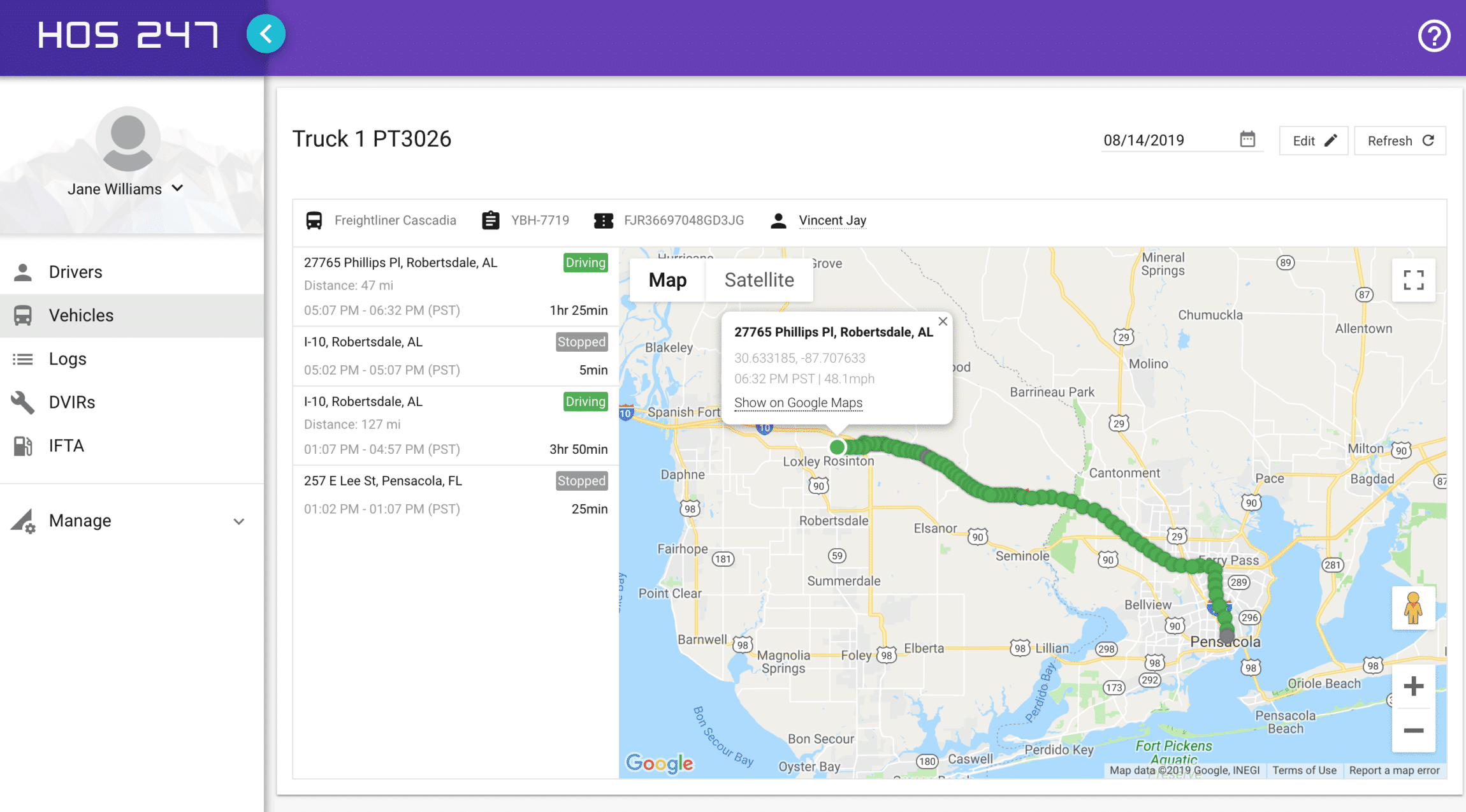
How Does GPS Tracking Work?
Tracking solutions rely on GPS technology to collect real-time data from vehicles in the field. This data includes location, speed, and vehicle diagnostics. Here’s how they operate:
- GPS receivers. Each vehicle in the fleet is equipped with a GPS receiver that communicates with satellites to determine its precise location.
- Data transmission. The GPS receiver collects data, such as location, speed, and engine diagnostics, and transmits it to a central server.
- Data analysis. The central server processes the data and makes it accessible to fleet managers through a user-friendly interface.
- Real-time monitoring. Fleet managers can monitor the location and status of vehicles in real-time, allowing for proactive decision-making.
Ultimately, GPS tracking is more than just dots on a map — it converts real-time vehicle data into strategic insights that drive smarter decisions, greater efficiency, and stronger customer trust.
Types of Fleet Tracking Solutions for Different Industries
While the core technology is similar, the application of fleet tracking varies significantly across industries. The best providers offer solutions tailored to the unique challenges of different sectors.
- Long-haul trucking. For fleets crossing state lines, the primary concerns are HOS compliance, IFTA fuel tax reporting, and long-distance communication. Tracking solutions for this sector must have rock-solid, integrated ELDs to automate logging and prevent violations. They also need robust IFTA reporting features that automatically calculate miles driven in each state, saving countless hours of administrative work. Real-time ETAs are also critical for keeping customers informed on cross-country journeys.
- Local delivery and last-mile. This industry is all about speed, efficiency, and customer satisfaction. The key is route optimization. GPS tracking systems for local delivery fleets use advanced algorithms to plan the most efficient multi-stop routes, accounting for traffic and delivery windows. They also provide real-time updates and notifications to customers, creating a transparent and professional delivery experience.
- Construction and heavy equipment. In construction, expensive assets are often left on unsecured job sites, making them prime targets for theft. Fleet tracking for this industry focuses heavily on asset utilization and security. Geofencing alerts managers if a bulldozer or excavator moves outside of a job site after hours, while engine hour monitoring ensures accurate billing and tracks usage for preventive maintenance, preventing costly downtime.
- Service fleets (HVAC, plumbing, electrical). For service-based businesses, efficiency and customer service are paramount. Fleet tracking allows dispatchers to see which technician is closest to an urgent service call, reducing response times and improving customer satisfaction. It also provides a detailed record of when a technician arrived and left a job site, ensuring accurate billing and resolving any potential customer disputes.
In short, choosing the right fleet tracking solution depends on the specific needs of each industry, and tailored tools help businesses maximize efficiency, security, and customer satisfaction.
Key Features Every Fleet Tracking Solution Should Have
As you evaluate different systems, there is a core set of features that form the foundation of any high-quality fleet tracking solution. Ensure any provider you consider offers these essential capabilities:
- Real-time location tracking. This is the most fundamental feature. The system should provide a live map view of all your vehicles, with location data that updates frequently (e.g., every 30-60 seconds). The ability to see your fleet’s exact location allows for better dispatching, faster response to emergencies, and improved operational awareness.
- Driver behavior monitoring. A crucial feature for enhancing safety and reducing costs. The system should monitor and report on risky driving behaviors such as speeding, harsh braking, and rapid acceleration. This data allows you to create driver scorecards and implement targeted training programs to foster a culture of safety.
- Fuel management and idle time reduction. Fuel is one of your biggest expenses. A good tracking system helps you manage it by monitoring fuel consumption and, most importantly, idle time. You can set up alerts for when a vehicle has been idling for too long, a practice that wastes significant amounts of fuel and causes unnecessary engine wear.
- Preventive maintenance scheduling. Proactive maintenance is far less expensive than reactive repairs. The system should allow you to set up maintenance schedules based on mileage, engine hours, or time. It will then automatically send reminders when a vehicle is due for service, helping you prevent unexpected breakdowns and extend the life of your assets.
- Mobile app functionality. Fleet management doesn’t stop when you leave the office. A comprehensive mobile app for both iOS and Android is essential for managers and drivers. Managers need the ability to monitor the fleet from anywhere, while drivers can use the app for vehicle inspections, HOS logs, and communicating with dispatch.
- Automated IFTA capabilities. For interstate carriers, manually calculating IFTA fuel taxes is a time-consuming and error-prone process. A top-tier solution will automate this by capturing all the necessary mileage and fuel purchase data, to facilitate reporting.
Ultimately, these aren’t just features; they are the essential tools that transform a simple GPS dot on a map into a powerful management system. The right solution will integrate these capabilities seamlessly, giving you the actionable insights needed to drive safety, efficiency, and profitability across your entire operation.
Choosing the Right Fleet Tracking Solution
Selecting the right GPS system for your business is a critical decision, impacting fleet efficiency, safety, and productivity. Here are the key factors to consider:
- Scalability. Assess the solution’s scalability to accommodate your current fleet size and future growth. It should adapt to your changing needs without requiring a complete system overhaul.
- Features and customization. Seek a solution that provides a diverse set of features tailored to your specific requirements. With customization, you only invest in the features that truly align with your needs.
- Ease of use. An intuitive user interface is essential. Complex technology should be presented in a way that’s easy for your team to understand and use.
- Integration capabilities. Ensure the solution can seamlessly integrate with other systems you use, such as electronic logging devices for HOS compliance or maintenance management tools.
- Customer support. Evaluate the level of customer support provided by the provider. Responsive and knowledgeable support is essential for a GPS system to be truly functional.
- Cost-effectiveness. Understand the pricing structure and value the solution brings in terms of efficiency improvements, cost savings, and compliance. Also, make sure there are no extra fees for concepts such as activation or training.
- Trial period. Opt for a solution that offers a trial or demo period to evaluate real-world performance.
- User feedback and reviews. Most of the factors discussed above can be evaluated by reading online reviews posted on independent websites by actual users. Make sure to choose a system that has been positively rated by fellow truckers to save time and resources.
Choosing amongst the best gps fleet tracking solutions available is a strategic decision that can significantly impact your fleet’s efficiency and success. By carefully evaluating your options, you can make an informed choice that aligns with your unique fleet management needs. Remember that the right solution should not only streamline your operations but also provide a clear return on investment through improved productivity, safety, and cost savings.
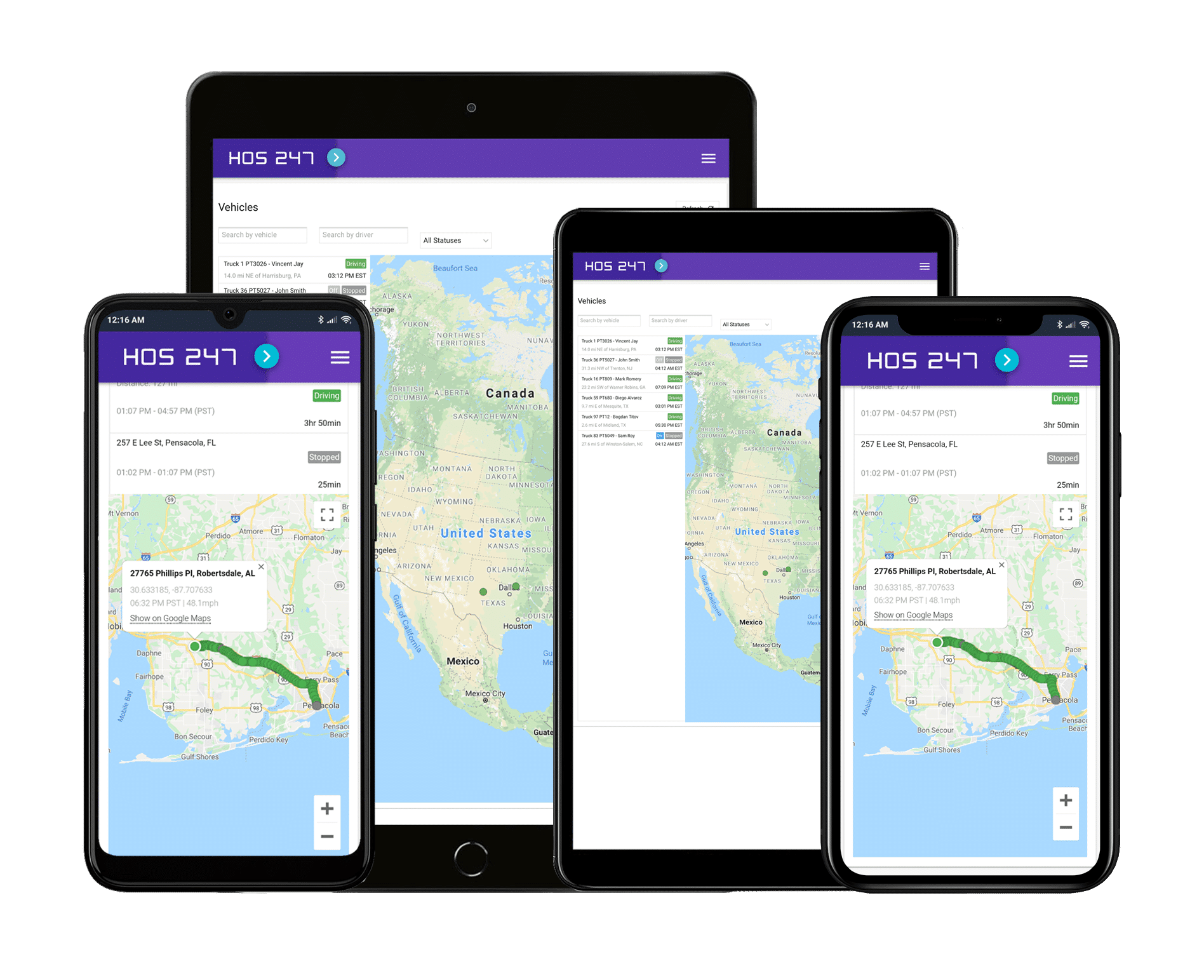
GPS and ELD Integration for Comprehensive Fleet Management
The integration of GPS and ELD systems can be very beneficial for motor carriers. Here’s how this integration can enhance fleet management, facilitate workflows, and positively impact the company’s bottom line:
- Compliance with federal regulations. Electronic logging automates driver hour tracking, eliminating manual record-keeping and allowing for efficient compliance with HOS regulations and the mandate.
- Real-time data. Combining ELD and GPS data provides real-time insights into driver activities and vehicle conditions, empowering fleet managers to make informed decisions, maximizing efficiency and productivity.
- Enhanced safety. ELDs and GPS work together to monitor driver behavior and vehicle condition, ensuring safer driving practices and reducing accidents.
- Cost savings. All of the above lead to more efficient use of company assets and operating cost reductions that lead to increased profits.
- Convenience. Opting for a single provider that offers both solutions simplifies the onboarding process and frequently proves more cost-effective than engaging with multiple providers.
In essence, integrating these systems isn’t merely a tech convenience; it’s a savvy business decision for trucking companies. This integration ensures seamless compliance with regulations, enhances driver safety, improves fleet efficiency, and ultimately boosts your bottom line.
Navigating Common Fleet Tracking Hurdles
Even the best systems can have roadblocks. Here’s a quick, no-nonsense guide to the most common challenges and how to solve them.
The Problem: “Is the boss watching my every move?”
Drivers are often wary of tracking, fearing it’s just for micromanagement. This can cause friction and pushback from your team.
- The Solution: Be Upfront and Focus on the Benefits. Explain that the system is a tool for safety, not spying. Show how it can protect them by providing proof in an accident, verifying delivery times to customers, and reducing calls from dispatch asking where they are. When drivers see it as a tool that helps them, they’re more likely to get on board.
The Problem: Drowning in Useless Data.
Some systems throw so much information at you — maps, graphs, reports — that it becomes overwhelming and useless.
- The Solution: Manage by Exception. A good system lets you set up custom alerts. Don’t watch the map all day. Instead, set an alert to notify you only when something important happens — like a truck idling for more than 15 minutes, a harsh braking event, or a vehicle entering a customer’s location. This lets you focus on what actually needs your attention.
The Problem: Spotty Cell Service in Rural Areas.
What happens when a truck is in the middle of nowhere with no cell signal? Does the data get lost?
- The Solution: “Store and Forward” Technology. Reliable tracking hardware doesn’t give up when it loses a signal. It saves all the location and log data internally. The moment the truck gets back into a service area, the device automatically sends all the stored information to the server. This means you never have gaps in your logs or location history.
The Problem: Dropped Calls with Tech Support.
You’re on the side of the road with an issue, you finally get through to support, and the call drops. Now you have to start all over again.
- The Solution: A Guaranteed Callback. This is a must-have. There’s nothing more frustrating than getting disconnected while solving a problem. At HOS247, we have a strict callback policy: if your call drops for any reason, the support agent who was helping you will call you right back. No waiting in line again, no explaining your issue to someone new. We make sure your problem gets solved.
Tracking Your Fleet With HOS247
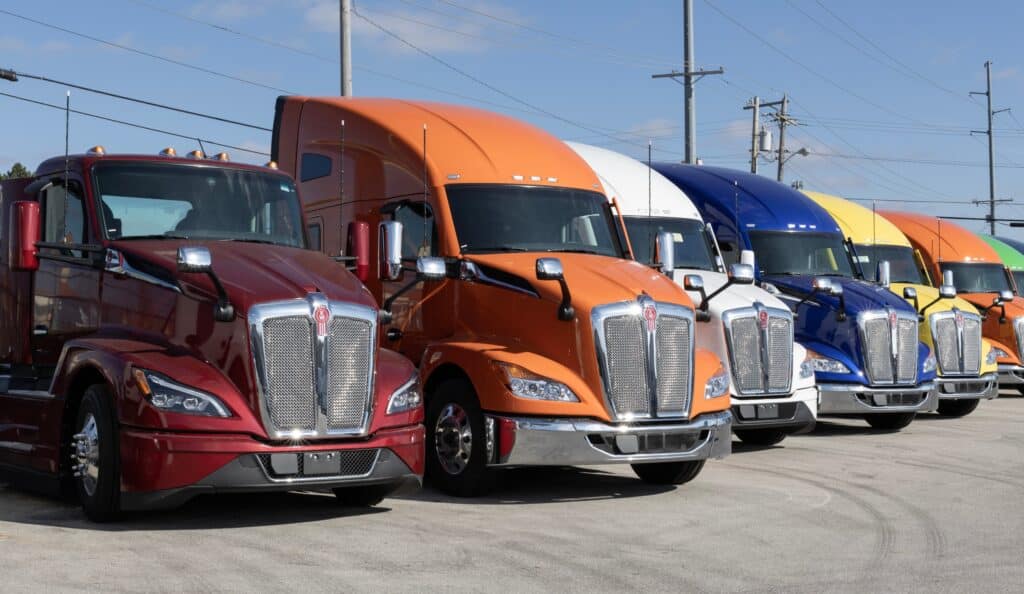
At HOS247, we understand the complexity of fleet management, and our system is designed to help. Our commitment to customer care and reliability sets us apart. Here’s why truckers choose HOS247:
- Customer-centric support. Our customers are our top priority. We offer effective customer support every day of the week, including multilingual assistance, to ensure that the system operates smoothly.
- Real-time tracking. Our devices offer advanced real-time tracking, providing up-to-the-minute insights into your fleet’s location and activities. This gives you complete control of your operations, enabling proactive decision-making, enhanced security, and timely deliveries.
- Vehicle compatibility. HOS247’s tracking devices are compatible with a wide range of vehicles. Whether you manage a diverse fleet or specialize in specific industries, our solutions adapt to your needs, ensuring comprehensive asset monitoring.
- Maintenance reminders. Our system includes proactive maintenance reminders. These reminders help fleet managers stay ahead of vehicle maintenance schedules, reducing costly downtime and unexpected repairs. By ensuring that your vehicles are well-maintained, you can extend their lifespan, enhance safety, and minimize operational disruptions.
- ELD integration. HOS247 offers ELD-integrated trackers, streamlining HOS compliance. This integration keeps your fleet within regulatory guidelines effortlessly, reducing the risk of violations and fines while enhancing overall compliance and safety.
- Flexible solutions. Our GPS solutions offer scalability and flexibility, meaning no contracts, the choice between monthly or yearly payments, and plans that include different features for your fleet’s business needs.
GPS fleet tracking solutions are essential for modern businesses seeking operational optimization, safety, and compliance. Turn to HOS247 for comprehensive, reliable, and customer-centric solutions that empower your business to thrive in the competitive transportation industry. With our commitment to customer satisfaction, we’re here to help you succeed in your journey.
Conclusion
In today’s industry, GPS fleet tracking is no longer optional — it’s essential for optimizing operations. These systems are proven to boost efficiency, enhance driver safety, ensure compliance, and deliver significant cost savings. However, unlocking these benefits depends entirely on choosing a dependable provider with reliable technology and responsive support.
Don’t leave your fleet’s potential to chance. Experience the HOS247 difference firsthand and see how our user-friendly system and expert support can transform your business. Take control of your fleet’s future by starting your no-obligation, two-week trial today.

As an expert in B2B and B2C sales, I’ve dedicated myself to perfecting sales processes and client retention strategies in the logistics and trucking industry. I have significantly contributed to the expansion of the ELD service, catering to retail and wholesale clients in need of HOS247 ELD solutions. My unwavering commitment to implementing state-of-the-art sales techniques and technologies ensures the continuous growth and success of businesses I work with.











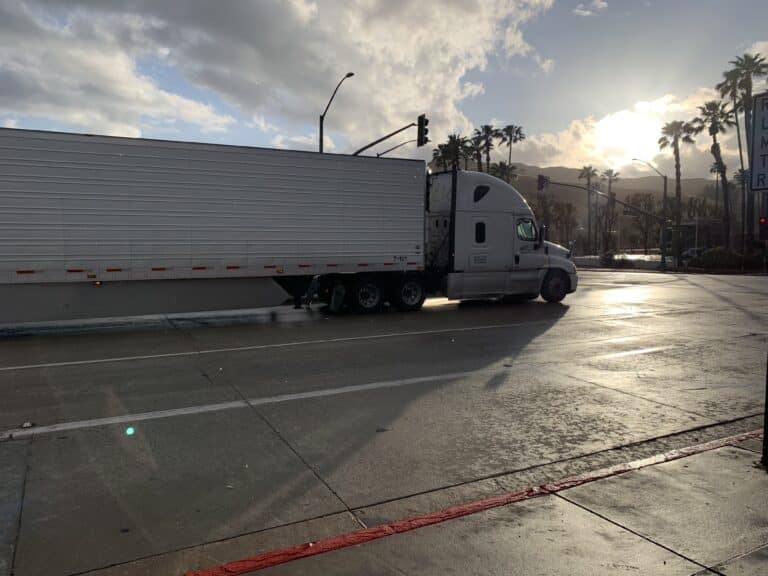
As a trucker, you know that using an electronic logging device (ELD) is required by law. The FMCSA mandates that most commercial drivers use electronic logbooks to track their hours of service (HOS). However, with so many electronic log companies
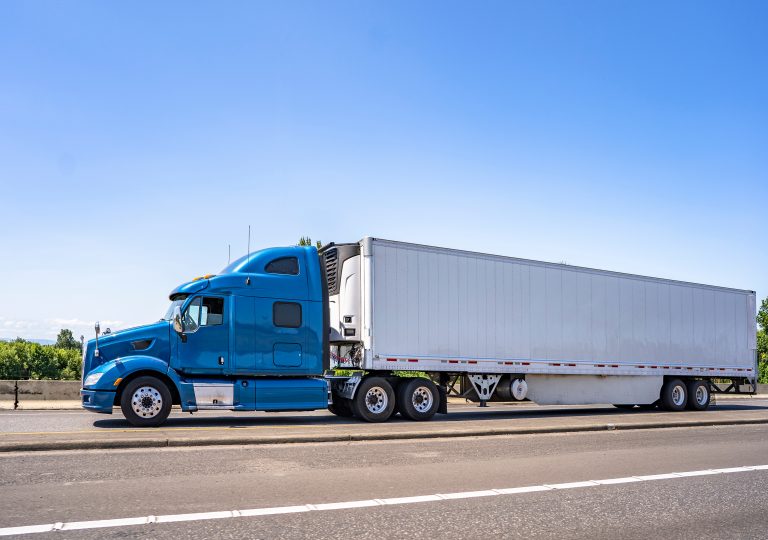
According to Department of Transportation (DOT) regulations, drivers of commercial motor vehicles must keep a driver log book to record their hours of service (HOS). Records of duty status (RODS) can be recorded manually on a paper log or using

The Federal Motor Carrier Safety Administration (FMCSA) issued the federal ELD law, which the Department of Transportation (DOT) enforces. It requires commercial motor vehicle (CMV) operators to use electronic logging devices to record their driving hours instead of paper logs.